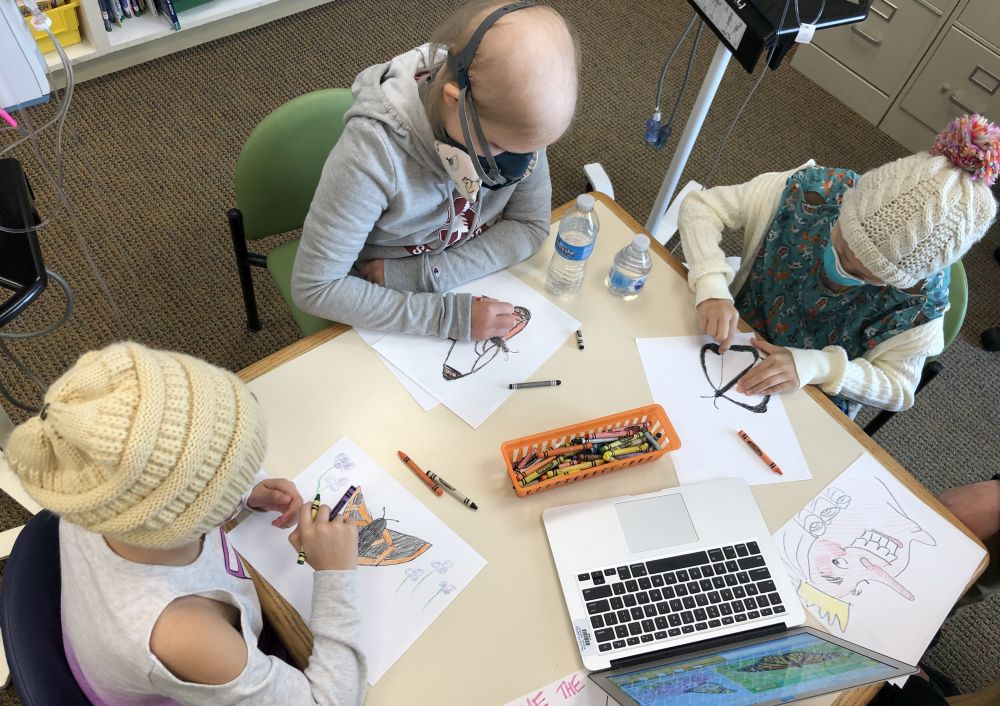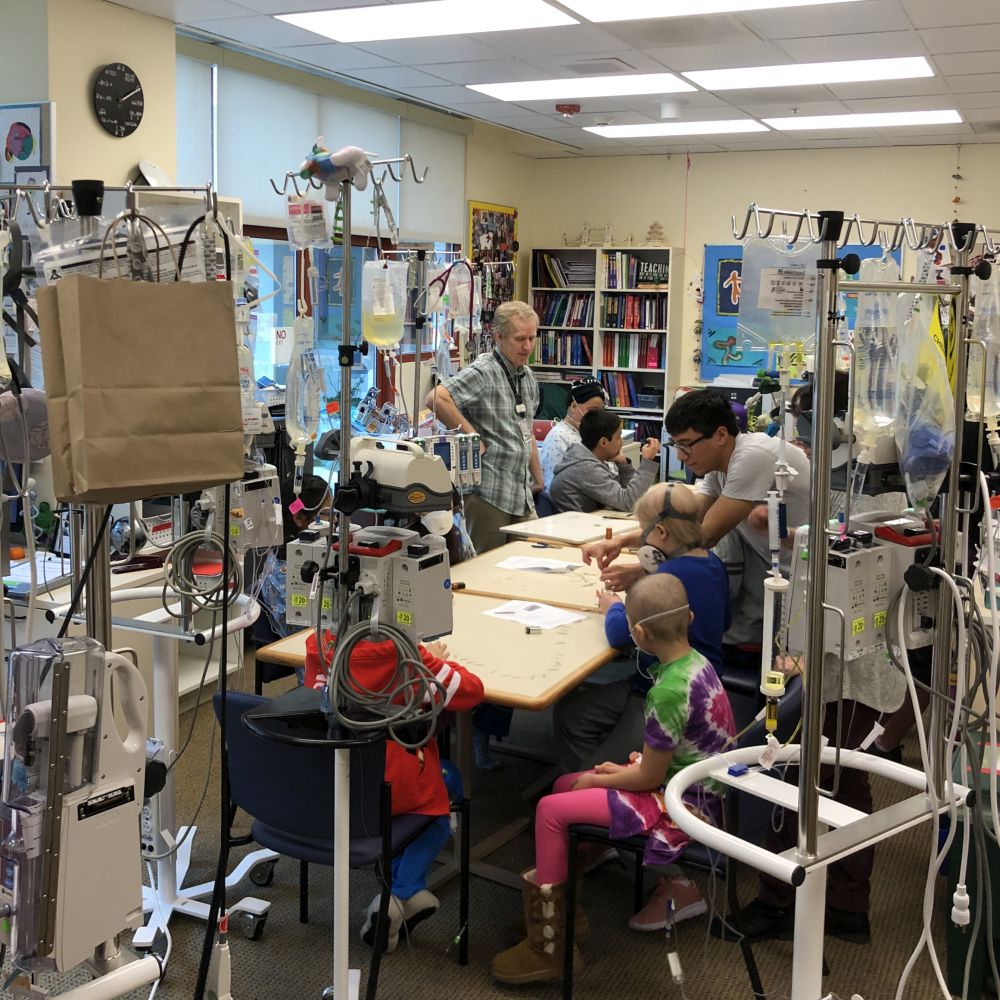On the same day I visited the off-the-charts intriguing space of Playground Global (see this post), I also visited a school of a kind I didn’t know existed.
Several months ago some friends from graduate school got together to catch up. We were in the Stanford Teacher Education Program twenty-five years ago, and it was great fun to hear about the cool and widely varying experiences of the group.
One buddy, Kathy, has spent almost two decades teaching at a hospital school. “A what?” someone asked.
It’s a school in a hospital. That is, if a young person is recovering from an organ transplant, or undergoing chemotherapy, or something similar, there are lots of reasons to keep them going in terms of their learning. Kathy is one of a small team who works with these students to make sure they have some cool learning to focus on.
That is to say, they are keenly aware that each student is battling something, and they work with each to build connections, confidence, and insights.

How many of the students we see in “normal” schools are also students with difficulties who need individualized plans to see powerful possibilities for their futures? I’d argue that to one degree or another, they all do.
That we often don’t know what the difficulties are, though, may well be a byproduct of the one-size-fits-all thinking that is at the core of too many of the world’s schools.
So what’s the lesson I take away from Kathy’s team and school?
Let’s leave our one-size-fits-all omniscience at the door, admit that it is hard but necessary work to get to know each of our students in order to inspire them, and embrace the personal and professional rewards of choosing a far more meaningful way of teaching.
![]()

images used with permission